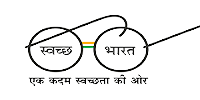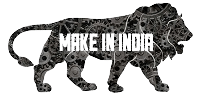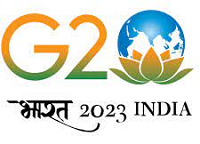- +91 9322728183
- info@sixsigma-tqm.in
- Six Sigma Quality International, Vasai-Virar, Mumbai, Maharashtra 401202
- +91 9322728183
- info@sixsigma-tqm.in
- Six Sigma Quality International, Vasai-Virar, Mumbai, Maharashtra 401202
Inspection is the process of examining, measuring, testing, or evaluating materials, products, systems, or processes to ensure they meet specified requirements or standards.
It helps identify:
Defects
Deviations from standards
Safety hazards
Non-compliance
Inspections are crucial in manufacturing, construction, food safety, pharmaceuticals, and engineering sectors.
Inspection Services are professional services provided by certified companies or inspectors to:
Evaluate quality and safety
Ensure products/processes meet regulations
Generate inspection reports
Support certifications (e.g., ISO)
These services may include:
On-site inspections
Documentation checks
Dimensional checks
Safety and performance tests
This focuses on inspecting product quality to ensure:
It meets customer specifications
It complies with quality standards (like ISO 9001)
Defects are minimized or eliminated
Types:
Incoming inspection (raw materials)
In-process inspection (during production)
Final inspection (before shipping)
Third-party inspection is performed by an independent company or body, not involved in the production or buying/selling of the product.
Purpose:
Ensure unbiased evaluation
Build trust between supplier and buyer
Required for international trade or contracts
Common in:
Oil & gas
Construction
Machinery & equipment exports
These are specialized inspection services for heavy industries, such as:
Power plants
Chemical plants
Pipelines
Manufacturing units
May involve:
Non-destructive testing (NDT)
Welding inspections
Pressure testing
Electrical and mechanical system evaluations
These inspections ensure compliance with laws, regulations, and standards, such as:
ISO standards (e.g., ISO 14001, ISO 45001)
Health & safety regulations
Environmental laws
Industry-specific codes
Used for:
Regulatory audits
Certification processes
Risk management
| Term | Description |
|---|---|
| Inspection | Process of checking items/processes for conformity to standards |
| Inspection Services | Professional evaluation services for quality, safety, and compliance |
| Quality Inspection | Ensuring product meets quality and performance criteria |
| Third-Party Inspection | Unbiased inspection by an independent organization |
| Industrial Inspection | Specialized services for equipment and processes in industrial sectors |
| Compliance Inspection | Verifies adherence to legal, regulatory, and certification standards |
Inspection is the process of examining, measuring, testing, or gauging one or more characteristics of a product, process, or service and comparing the results with specified requirements to determine conformity.
Inspection means checking whether something meets the standards or requirements.
Purpose: To ensure quality, safety, and compliance.
Conducted on: Raw materials, in-process items, finished goods, systems, or services.
Types of Inspection:
Incoming Inspection: Checks raw materials or components before production.
In-process Inspection: Performed during manufacturing or service delivery.
Final Inspection: Carried out on the finished product before delivery.
A factory checks the size and weight of bolts before packaging (Product Inspection).
A construction site supervisor checks if safety gear is being used (Process/Compliance Inspection).
An auditor reviews company processes against ISO standards (System Inspection).
Verification: Confirms if a product meets design specs.
Validation: Ensures the product meets user needs.
Audit: Broader and systematic review compared to inspection.
These are the people responsible for conducting inspections:
Quality Inspectors – in manufacturing or service industries
Internal Auditors – within an organization
Third-Party Auditors – from external certification bodies (like ISO)
Government Inspectors – from regulatory bodies (like FDA, BIS, FSSAI, etc.)
Customer Representatives – especially in contract manufacturing
Inspections may be required by:
| Who | Why |
|---|---|
| Regulatory Authorities | To ensure legal and safety compliance (e.g., food, pharma) |
| Customers or Clients | To ensure product/service quality meets contract terms |
| Management / Company | As part of internal quality control or ISO standards |
| Certification Bodies (e.g., ISO) | To check compliance with international standards |
| Industry Standards Bodies | Like BIS, ASTM, ASME — to ensure products meet industry norms |
A pharmaceutical company is required by the Drug Control Authority to inspect its production line regularly.
A customer places a large order and sends their quality inspector to approve the products before shipment.
A company getting ISO 9001 certified must undergo internal inspections and external audits.

The question “When is required inspection?” refers to the timing or situations when an inspection must be carried out. The answer depends on the context, such as manufacturing, construction, services, or compliance.
| Stage | When Inspection is Required |
|---|---|
| Before Production | – To inspect incoming raw materials or parts (Incoming Inspection) |
| During Production | – To check in-process quality and ensure defects are not carried forward (In-Process Inspection) |
| After Production | – To inspect the finished product before delivery or dispatch (Final Inspection) |
| Before Shipment | – To conduct pre-dispatch inspection requested by customer or buyer |
| After Installation | – To inspect installed equipment or systems (Commissioning Inspection) |
| Scheduled Timeframes | – As per maintenance or safety schedules (e.g., annual inspection) |
| On Customer Demand | – When a customer requests inspection before accepting delivery |
| During Audits | – As part of internal, external, or regulatory audits |
| When Issues Are Found | – If there is a quality complaint, nonconformity, or defect report |
| Before Certification | – To comply with ISO or regulatory requirements (e.g., ISO 9001, ISO 15189) |
Before pouring concrete, inspection is required to check formwork and steel reinforcements.
After completion, inspection ensures the structure meets building codes.
Before production starts, check raw materials.
After final assembly, inspect the product for defects.
Here’s a clear breakdown:
| Location | Purpose of Inspection |
|---|---|
| At Goods Receiving Area | Incoming inspection of raw materials or components |
| On the Production Line | In-process inspection at key stages (e.g., assembly, machining) |
| At Final Assembly Area | Final inspection of finished products |
| Before Packaging and Dispatch | Pre-shipment or final visual and functional check |
| Storage/Warehouse | Inspection of stored goods for damage, shelf life, or compliance |
| Location | Inspection Purpose |
|---|---|
| Construction Site | Structural safety, material quality, and process compliance |
| Foundation and Formwork Areas | Before pouring concrete |
| Electrical and Plumbing Installations | Code compliance and safety |
| Final Structure (building, road) | Final inspection before handover |
| Location | Inspection Purpose |
|---|---|
| Sample Collection Area | Check proper procedures and cleanliness |
| Testing Area / Equipment Zones | Verify equipment calibration and test accuracy |
| Documentation and Records | Audit of lab records, test reports, quality logs |
| Location | Inspection Purpose |
|---|---|
| Workstations / IT Systems | Check for data security, performance, and software compliance |
| Document Control Areas | Inspection of records, policies, and version control |
| Customer Service Points | Service quality, response time, and behavior compliance |
Inspections are required:
Wherever there is a critical process, product, or risk
At defined inspection points (as per quality plans, SOPs, or standards)
Anywhere nonconformance could occur or be prevented
It typically follows a systematic process:
Identify what needs to be inspected (product, process, system)
Define when and where the inspection will take place
Refer to standards, drawings, specifications, or SOPs
Assign qualified inspectors or teams
Compare against:
Technical drawings or blueprints
Product specifications
Quality standards (e.g., ISO, BIS, ASTM)
Regulatory or legal requirements
Depending on the type of inspection:
| Method | Used For |
|---|---|
| Visual Inspection | Surface defects, labeling, cleanliness |
| Dimensional Check | Length, width, thickness using tools like calipers |
| Functional Testing | Product operation and performance |
| Non-Destructive Testing (NDT) | Internal defects in metals or welds |
| Document/Record Review | Compliance with procedures or standards |
| Software/IT Audit Tools | For system and data inspections (in ISMS, etc.) |
Fill in inspection checklists, forms, or digital logs
Report conformities or non-conformities (NCs)
Use tags/labels like:
✅ Accepted
❌ Rejected
⚠️ Rework Required
For accepted items → continue to next process
For rejections → isolate and take corrective actions
Record everything for traceability and future audits
A company producing metal parts may:
Inspect material on arrival (with micrometers, hardness testers)
Check parts during machining (tolerance measurement)
Do final inspection before packaging (visual + functional)
Record results in a quality control form
Internal inspections (audits) are carried out by trained auditors using:
Audit plans
Checklists
Objective evidence
Non-conformance reports (NCRs)
Audit reports

To ensure every brake disc produced meets quality and safety standards before delivery to a leading automobile brand.
Materials Inspected: Cast iron raw materials
Tools Used: Chemical composition analyzer, visual inspection
Findings: One batch had excessive carbon content → Rejected
Location: CNC Machining Line
Parameters Checked: Diameter, thickness, run-out tolerance
Tools Used: Vernier calipers, dial gauges, go/no-go gauges
Frequency: 1 in every 10 pieces
Result: 5% of parts showed deviation in run-out → Reworked
Before Packaging:
Surface finish
Weight
Labeling and marking
Result: All parts passed
Inspector: Mr. Ravi (trained Quality Inspector)
Inspection checklist
Batch-wise inspection report
Non-Conformance Report (NCR) for reworked items
Supplier was notified about raw material defect
Machining process was fine-tuned to control run-out issue
Operator retraining was conducted
Customer received 100% defect-free parts
Improved supplier communication
Audit trail maintained for ISO 9001 compliance
Internal audit gave positive remarks on inspection control
Early-stage inspection saves cost and time
Real-time inspection prevents defects from reaching the customer
Documentation and traceability are critical for ISO and client audits
Inspection is a critical process used across industries to ensure quality, safety, and compliance with regulatory standards. Whether in manufacturing, construction, IT, or healthcare, inspection helps detect defects, nonconformities, and process deviations early — saving costs and protecting stakeholders. This white paper explores the concept, types, methods, benefits, and best practices of inspection, with insights into ISO-based frameworks and industry applications.
Inspections are systematic examinations or evaluations of processes, products, services, or systems. The goal is to verify conformity with established standards, specifications, or regulations. Inspections form a foundation for quality assurance, risk control, and continuous improvement.
Ensure product or service quality
Prevent defects and rework
Detect nonconformities early
Comply with standards (e.g., ISO, BIS, ASTM)
Build customer confidence
Maintain traceability and accountability
| Type | Purpose |
|---|---|
| Incoming Inspection | Check raw materials/components from suppliers |
| In-Process Inspection | Monitor quality during production or operation |
| Final Inspection | Evaluate finished product or system |
| Pre-shipment Inspection | Verify conformity before delivery |
| Internal Audit Inspection | Evaluate processes against internal controls |
| Regulatory Inspection | Ensure compliance with legal requirements |
Visual Inspection – Surface quality, labeling, packaging
Dimensional Inspection – Using tools like calipers, micrometers
Functional Testing – Operational performance testing
Non-Destructive Testing (NDT) – Ultrasonic, radiographic, magnetic particle, etc.
Document/Process Review – For ISO or compliance audits
IT/System Inspections – Data security, backups, access control
| Standard | Inspection Focus |
|---|---|
| ISO 9001 | Product and process inspection for quality |
| ISO 14001 | Environmental compliance inspections |
| ISO 27001 | Information security inspections (logs, risks) |
| ISO 15189 | Laboratory equipment and process inspections |
| IATF 16949 | Automotive part inspections, traceability |
Develop clear inspection plans/checklists
Train inspectors with up-to-date knowledge and tools
Use calibrated tools and instruments
Implement root cause analysis for nonconformities
Maintain records for traceability and audits
Integrate inspection with digital systems (ERP/QMS)
Review inspection data for continual improvement
Reduced rework and wastage
Increased customer satisfaction
Enhanced product reliability
Improved compliance and audit performance
Minimized legal and financial risks
Human error in manual inspection
Inconsistent inspection standards
Delays due to rework or unclear criteria
Poor documentation or traceability
Resistance to process improvement
Inspection is a cornerstone of quality control and risk management. Organizations that invest in proper inspection processes, skilled personnel, and technology tools will benefit from higher efficiency, fewer defects, and stronger reputations. As industries move toward digital transformation, integrating AI and data analytics into inspections will be key to future-proofing quality assurance.
ISO 9001:2015 Quality Management Systems
ISO 27001:2022 Information Security Management
ISO 15189:2022 Medical Laboratories
American Society for Quality (ASQ)
Bureau of Indian Standards (BIS)
Courtesy: indiaspecial
Here is a concise overview of the Industrial Application of Inspection — showing how inspection is applied across various sectors to ensure safety, quality, compliance, and efficiency.
Inspection is essential across all major industries to:
Detect defects
Prevent nonconformance
Ensure compliance with standards (like ISO, ASTM, BIS)
Improve safety and performance
Application:
Inspection of raw materials, machinery parts, and finished goods.
In-process and final inspection on assembly lines.
Tools Used:
Vernier calipers, micrometers, gauges, CMM (Coordinate Measuring Machine).
Example:
In automotive manufacturing, brake discs and engine blocks are inspected for dimensional accuracy and material defects.
Application:
Structural inspection of buildings, bridges, and roads.
Inspection of materials like cement, steel, and concrete mix.
Methods:
Visual inspection, ultrasonic testing, rebound hammer test (NDT).
Example:
Regular inspection of rebar alignment, column strength, and welding joints in high-rise construction.
Application:
Inspection of drug formulations, sterile environments, and lab equipment.
Ensures compliance with GMP and ISO 15189 in labs.
Methods:
Visual, microbiological, equipment calibration, sample testing.
Example:
In pathology labs, regular inspection ensures pipettes and analyzers meet accuracy standards.
Application:
Part inspection for precision, performance, and safety.
Ensures zero-defect supply to OEMs.
Methods:
Torque testing, paint thickness inspection, endurance testing.
Example:
Airbag sensor inspection using automated quality systems.
Application:
Inspection of circuit boards, solder joints, cables, and insulation.
Verification of electrical safety and electromagnetic compatibility (EMC).
Tools:
X-ray inspection, ICT (In-circuit testing), oscilloscope, insulation testers.
Example:
PCB inspections for short circuits and open solder points before device assembly.
Application:
Inspect waste segregation, effluent discharge, and air emissions.
Ensures compliance with ISO 14001 and local pollution control norms.
Example:
Inspection of STPs (Sewage Treatment Plants) and ETPs (Effluent Treatment Plants) in industries.
Application:
Inspection of system access controls, data backup processes, and network security.
Tools:
Log review tools, vulnerability scanners, SIEM systems.
Example:
Regular internal inspections of firewalls, antivirus updates, and login audit trails.
Application:
Inspection of aircraft parts, assembly, maintenance processes.
Methods:
Magnetic particle inspection, radiographic (X-ray), borescope inspection.
Example:
Inspection of turbine blades and fuel lines for micro-cracks before flight certification.
Industrial inspection is tailored to specific processes and risks within each sector. It is critical for:
Meeting regulatory requirements
Preventing defects and downtime
Ensuring workplace and end-user safety
Maintaining customer trust










2025. Copyright sixsigma-tqm.in